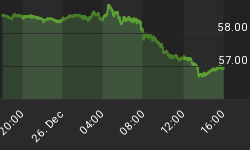Watch the declining volume for hints of what the market will do ...
Market technicians look at a lot of data, and sometimes seldom watched data like the Declining Volume on the New York Stock Exchange can become very important.
This morning, we will focus on only one type of formation on the DVOL and how it relates to a market bounce.
The market is very seldom in a state of true balance, and it is the degree of imbalance that often sets up buying opportunities for investors.
Take the NYSE's Down Volume for instance (symbol: DVOL). In today's chart, we inverted our data so it would track with the NYA Index's direction.
However, if you look at labels 1 to 3, you can immediately see three instances where the NYA Index did NOT track with the DVOL's trending.
In each of those three instances, the NYA Index went down, while the inverted DVOL went UP or Sideways. In other words, the opposite behavior of the Down Volume was trying to tell you something.
If the market was going down while the Down Volume was becoming less, then you would have to think that the amount of selling was starting to decrease and dry up.
That pretty much describes a positive divergence condition that was going on between the DVOL and the NYA Index at labels 1 through 3.
Comments: The best divergences often occur when the NYA Index has gone so low, that it falls below its lower Bollinger Band. That is an out of balance condition that needs to go back towards normality by re-entering the Bollinger band area.
When such a condition occurs, with a positive divergence coming from the inverted Down Volume, then an oversold condition is ready for a bounce. That is what we had a label 3 this week as seen on today's chart. There was not a lot of divergence occurring at label 3 in terms of "length of time", or the "rise on the slope", so it is very likely that this divergence will not have the impact that label 2's divergence had on the market.

















